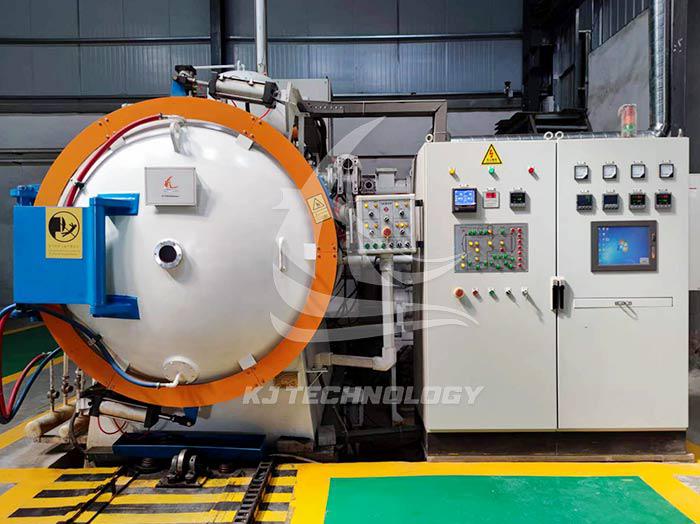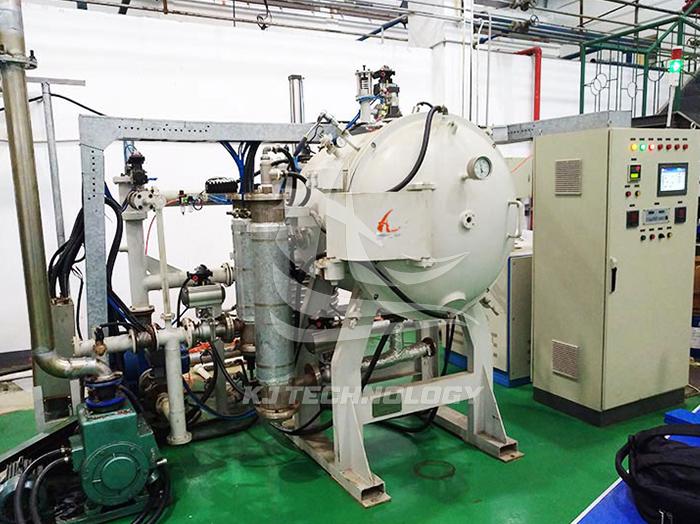Application of High Temperature Vacuum Brazing Furnace in Ceramic Industry
 03-24-2025 Author: KJ technology
03-24-2025 Author: KJ technology
The application of vacuum brazing furnaces in the ceramic industry is becoming increasingly widespread, mainly reflected in the following aspects:
1. The connection between ceramics and metals
The vacuum brazing furnace can effectively solve the problem of welding ceramics and metal materials. Ceramic materials have the characteristics of high melting point, high insulation performance, and poor thermal stability. Traditional welding methods often find it difficult to obtain high-performance welded joints. Vacuum brazing technology can achieve organic bonding between ceramics and metals by melting brazing materials in high vacuum environments, forming composite components that combine the advantages of both ceramics and metals. For example:
The connection between Al ₂ O ∝ ceramics and 5005 aluminum alloy: The surface to be welded of the aluminum test plate is polished with sandpaper to remove the oxide film on the surface. The Al Si solder foil is placed between the ceramic and aluminum alloy surfaces to be connected, and heated in a vacuum environment to achieve high-quality welding.
The connection between DD3 high-temperature alloy and Ti ∝ AlC ₂ ceramics: Ag Cu Ti is used as the brazing material and heated in a vacuum environment to achieve a stable and firm joint, with a shear strength of up to 135.9 MPa.
2. Metalization of ceramic materials
In order to improve the welding performance of ceramic materials, it is often necessary to metalize the ceramic surface. The vacuum brazing furnace can form a metal thin film on the surface of ceramics through active metallization treatment in a high vacuum environment, thereby improving its welding performance. For example:
Metalization treatment of Al ₂ O ∝ ceramics: By uniformly coating Ag Cu Ti powder on the ceramic surface and then heating it in a vacuum environment, the metallization of the ceramic surface can be achieved, providing convenience for subsequent welding.
3. Manufacturing of Ceramic Matrix Composite Materials
Ceramic based composite materials have been widely used in aerospace, electronic and electrical fields due to their excellent properties. Vacuum brazing furnace can achieve precise connection of ceramic matrix composite materials and improve their overall performance. For example:
Manufacturing of ceramic matrix composite materials: Through vacuum brazing technology, precise connection between ceramic matrix and reinforcement bodies (such as fibers, particles, etc.) can be achieved, improving their mechanical properties, thermal stability, etc.
4. Repair and Remanufacturing of Ceramic Products
Ceramic products may experience damage such as cracks and fractures during use, requiring repair or remanufacturing. Vacuum brazing furnace can repair and remanufacture ceramic products by melting brazing materials in a high vacuum environment. For example:
Repair of ceramic parts: By selecting appropriate brazing materials and process parameters, precise repair of ceramic parts can be carried out in a vacuum environment to restore their original performance.
5. Advantages of vacuum brazing furnace application in the ceramic industry
Avoiding oxidation and contamination: Vacuum brazing furnaces perform welding in high vacuum environments, which can prevent oxidation and contamination of ceramics and metals during the welding process, and improve the quality of welded joints.
Precise control of welding temperature and time: Through a precise temperature control system and heating program, precise control of welding temperature and time can be achieved to ensure the performance of the welded joint.
Suitable for various ceramic and metal materials: The vacuum brazing furnace is suitable for connecting various ceramic and metal materials, including ceramic materials such as alumina, silicon nitride, and silicon carbide, as well as metal materials such as aluminum, titanium, and stainless steel.
Improve production efficiency and product quality: Vacuum brazing furnaces can achieve efficient and high-quality welding, improve production efficiency and product quality, and reduce production costs.
In summary, the application of vacuum brazing furnaces in the ceramic industry has broad prospects and significant value. With the continuous advancement of technology and the expansion of application fields, vacuum brazing furnaces will play a more important role in the ceramic industry.








